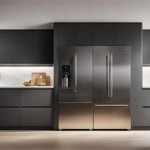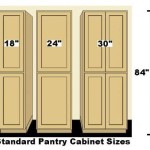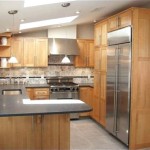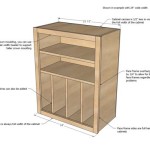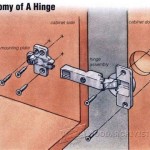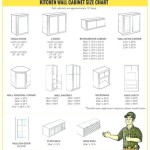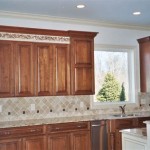How To Choose The Right Kitchen Hood
A kitchen hood, also known as a range hood or vent hood, plays a crucial role in maintaining a clean and healthy kitchen environment. It removes smoke, grease, steam, and cooking odors, preventing them from accumulating on surfaces and improving indoor air quality. Choosing the right kitchen hood involves understanding various factors, from the type of cooking to the kitchen's design and size.
Consider Cooking Habits
Cooking habits significantly influence the type of hood required. Frequent high-heat cooking, such as frying or searing, generates more smoke and grease, necessitating a more powerful hood. Less frequent cooking or methods like simmering and steaming produce less airborne particles, allowing for a less powerful option.
Measure the Stove/Cooktop
Accurate measurements of the stove or cooktop are essential for selecting a hood of the correct size. The hood should be at least as wide as the cooking surface and ideally a few inches wider on each side for optimal capture of cooking effluents. Precise measurements ensure efficient ventilation and prevent the spread of smoke and odors.
Determine the Hood Mounting Type
Kitchen hoods are available in various mounting types, each designed for different kitchen layouts and aesthetic preferences. Common types include:
- Under-cabinet hoods: Mounted under kitchen cabinets, offering a space-saving and cost-effective solution.
- Wall-mount hoods: Installed directly onto the wall, providing a focal point and greater design flexibility.
- Island hoods: Suspended from the ceiling above kitchen islands, offering a stylish solution for open-plan kitchens.
- Downdraft hoods: Integrated into the cooktop surface and rise when in use, ideal for minimalist kitchens.
Evaluate Ventilation Power (CFM)
CFM (cubic feet per minute) measures the airflow rate of the hood, indicating its ability to remove air from the kitchen. A higher CFM rating signifies greater ventilation power. Calculating the required CFM involves considering the stove type and kitchen size. A general rule of thumb is to have at least 100 CFM per linear foot of stovetop for electric stoves and 150 CFM per linear foot for gas stoves.
Assess Noise Levels (Sones)
Sones measure the loudness of the hood's operation. Lower sone ratings indicate quieter operation. While powerful hoods are typically louder, advancements in technology have led to quieter models. Consider the acceptable noise level in the kitchen environment when selecting a hood.
Inspect Ductwork Requirements
Proper ductwork is crucial for effective ventilation. The ductwork should be as short and straight as possible to minimize airflow resistance. The diameter of the duct should match the hood's outlet size. Assess the existing ductwork or the feasibility of installing new ductwork before choosing a hood. Ductless hoods, which recirculate air through filters, are an option for kitchens without existing ductwork, but these require regular filter replacement.
Explore Features and Aesthetics
Kitchen hoods come with various features that enhance functionality and convenience. These include:
- Multiple fan speeds: Allow for adjusting the ventilation power based on cooking needs.
- Built-in lighting: Illuminates the cooking surface for improved visibility.
- Heat sensors: Automatically adjust the fan speed based on the temperature.
- Automatic shut-off timers: Turn off the hood after a specified time.
Aesthetics also play a role in hood selection. Consider the overall kitchen design and choose a hood that complements the existing style, whether modern, traditional, or farmhouse.
Consider Budget
Kitchen hoods are available at various price points, influenced by factors like size, features, and brand. Establish a budget before starting the selection process to narrow down the options and find a hood that meets both functional requirements and budgetary constraints. Investing in a high-quality hood ensures long-term performance and efficient ventilation.
Examine Filter Types and Maintenance
Kitchen hoods utilize different types of filters to capture grease and other particles. Common types include:
- Baffle filters: Durable and dishwasher-safe, suitable for high-heat cooking.
- Mesh filters: Less expensive but require more frequent cleaning.
- Charcoal filters: Used in ductless hoods to absorb odors.
Consider the ease of filter cleaning and replacement when choosing a hood. Regular filter maintenance ensures optimal performance and prolongs the hood's lifespan.

Guide Choose A Range Hood For Your Kitchen Rona

6 Tips For Choosing Your Kitchen Hood How To Choose Vent Eatwell101

How To Choose The Right Range Hood For You And Your Kitchen

Kitchen Hoods How To Choose The Right Model For Your

Rustic Kitchen Bath

Kitchen Hood Guide Tips Faqs Electrolux

Choosing The Perfect Range Hood Everything You Need To Know

How To Choose A Range Hood For Your Kitchen Remodel Mainstreet Design Build

How To Choose The Right Range Hood For Your Home

How To Choose The Right Range Hood For You And Your Kitchen
Related Posts

